Dear Blog Readers,
We left Star Valley RV Resort today and have driven over to Caldwell, ID where we will stay tonight. We are on our way to visit Mike & Marilyn Harrison at their house near Chiloquin, OR.
There was a very nice dinner last night at Ken & Carolyn Kimpton's, with Brenda & Dave Neil, so we could all have one last evening together. Here we are in their living room, because it was too windy and cold to be outside:
Ken had acquired some very nice rhubarb for us from some friends of theirs, so we made a rhubarb-pineapple crisp for dessert. Here is Elaine with the rhubarb:Now that we have caught you up on our doings, below is the report for the 3rd Rhapsody cruise we did between May 17 and June 1, Dubai to Istanbul:
This cruise started in Dubai, and I put our information and
pictures about Dubai in the last blog post.
One nice thing about this port was that our longtime RV friends, Roy
& Kathy Gilbert joined us here. This
is their picture on formal night:
Other friends who joined the ship in Dubai were Sergio and
Reuben, from Miami, and Mark and Harald, from Germany. The 4 of them often travel together, and
David & Diane have also been with them on other cruises. So we all had lunch together in the dining
room:
The first port of call was Muscat, Oman, a country we had
never visited before. Oman is an Arab
country in the southeastern coast of the Arabian Peninsula. It is strategically important because of its
position at the mouth of the Persian Gulf.
In the past, the Omani Sultanate has been a powerful empire, the peak
being in the 19th century.
Although they have oil, they are only about #25 on the list of oil
producing countries. It is a very hot,
dry country, and it is surprising how green things look when driving through
the city. The Sultan Qaboos bin Said al
Said has been the hereditary leader of the country since 1970, when he ousted
his father who was a tyrant. Sultan
Qaboos is the longest-serving ruler in the Middle East, largely because he
instituted social reforms and increased spending on health, education and
welfare. He also has instituted voting
rights for all citizens over 21, and has supported having women stand for
election to the Consultative Assembly.
As our ship
approached the harbor, this was the view:
You can see how very dry and mountainous it looks, and the
big white sculpture is a replica of an incense burner.
Here is a picture of part of the town near the harbor:
We had to take a shuttle out of the port area, and there
were lots of taxis waiting for people who had not booked tours. We had 6 people, so we negotiated for a van and
made sure the driver spoke decent English.
I think we paid $20 each for a 3-4 hour tour. Just driving through the city we kept passing
interesting buildings and going under unique bridges, such as this one:
The first place we stopped was the amazing Royal Opera
House, built in 2001 on the orders of the Sultan because he is a big supporter
of classical music and the arts. It can
seat 1100 people.
The opera house complex consists of a concert theater, auditorium,
formal landscaped gardens, cultural market with retail, luxury restaurants and
an art center for musical, theatrical and operatic productions. This is a picture of the lobby:
We were not allowed to go into the actual theater, but here
is a picture of it from the internet:
The main attraction in Muscat is the Sultan Qaboos
Mosque. Built in 1995, from 300,000 tons
of Indian sandstone, it can accommodate up to 20,000 worshipers. This is 6,500 in the main musalla, 750 in the
women’s musalla, 8,000 outside on the paved area, and the rest in the
passageways and interior courtyard.
We were very annoyed that our ship wasn’t scheduled to
arrive in Muscat until 12:30PM because the mosque is the only one open to non-Muslim
visitors and only between the hours of 8 and 11:00AM Saturday to Thursday. A major feature of the design of the interior
is the prayer carpet which covers the floor of the prayer hall. It contains,
1,700,000,000 knots, weighs 21 tonnes and took four years to produce. It is the second largest single piece carpet
in the world, and covers the 4,343 square meter area of the praying hall. The
other amazing feature is the 14m tall chandelier, manufactured in Germany. I copied the following picture from the
internet:
This is a picture of our gang of 6 in front of the
mosque: Mary, Elaine, Diane, David,
Randy & Vicki.
And this is a picture of the mosque at night:
Randy & Vicki suggested that we stop to see the Grand
Hyatt Hotel after we had been to the nearby beach, because they had heard it
was impressive. They were right. This is a modest looking part of the
exterior:
Out back there was a refreshing looking pool area (it was
hot and we would have loved to go out there!)
The lobby was quite impressive:
With these windows overlooking part of the grounds:
We drove back towards the harbor and along the Cornish to
get to one of the Sultan’s palaces. This
is the El-Alam Palace:
The palace has a history of over 200 years, but was rebuilt
as a royal residence in 1972. Visitors
are not allowed, even though the Sultan lives elsewhere. It is mainly used for ceremonial purposes,
but is a popular place to walk because the gardens are beautiful.
It was very hot while we were touring, about 115F, so we did
not take the time to go to the market after our tour. We were happy to get back to the air
conditioned ship. Some of our friends
did go to the market where they purchased some of the frankincense for which
this area is famous. It is an aromatic
resin from trees which is used in incense and perfumes. Some of the ship tours went out to the places
where the trees grow.
On May 20 we went to Salalah, Oman. Nestled in the southern region of Oman,
Salalah has the benefit of the annual Indian monsoon: locally known as the
Khareef. This monsoon, which extends from early June to mid September,
transforms the countryside into a veritable garden with tumbling waterfalls and
meandering streams. Unfortunately, we
were not there during that time. There
wasn’t much to do which appealed to us so we stayed on the ship. We also heard that there was a tough “taxi
mafia”. Some people who wanted to go
into the city from the port were told that it would cost $100 per taxi, and the
distance is only 8 km!!! Later on we
learned that we could have walked out of the port area and over a small hill to
the local yacht club, called The Oasis Club, where there was a beach and a bar
with inexpensive beer.
After we left Salalah, we had quite a few sea days because
we were traveling through the Arabian Sea and then the Gulf of Aden. For a while we had Yemen on the starboard
side and Somalia on the port side – not a great situation. The ship instituted procedures called
Operation Safe Haven, where we practiced not being in areas accessible to the
outer parts of the ship, and after dark, there were no outside lights
allowed. Pirates operate in this area,
as well as warships. Here is a map:
We received word that we would be passing the Quantum of the
Seas, another Royal Caribbean ship going the other direction. So at the appointed time, we were on David
& Diane’s balcony so that we could take some pictures. We had a number of friends who were sailing
to Dubai on the Quantum. Here is the picture we took as we passed each other:
Since we were having so many sea days, we took advantage of
the offer of a galley tour. It was very
interesting, even though we have done this on other ships. I found the bread and pastry area to be the
most fascinating. The guy in this
picture gets up very early and makes sure that there is plenty of good bread,
rolls, muffins, and pastry available for all the passengers:
One of the perks we received for becoming Pinnacle was being
invited to some special meals at the specialty restaurants. This cruise it was a wonderful lunch at
Izumi, the Japanese restaurant. We
happily sat with Vicki & Randy, and Art & Karlene:
Besides the fact that the chef gave a demonstration of how
to make sushi, then we were served a delicious appetizer, a plate of wonderful
rolls (see picture), and a dessert plate:
The frosty looking green ball in the front is frozen ice
cream with a special coating – YUM!!!
On May 25 we were scheduled to go through the Suez Canal. Turns out it was a good thing we went through
here a few years ago, in the other direction, so we saw it in daylight. This time, much to everyone’s disappointment,
we did most of the canal at night. Egypt
is expanding the Suez Canal so that it can accommodate larger ships, and that
part will open this coming Thursday. The
72-kilometre (45-mile) long expansion is projected to cut the waiting period
for ships from 18 hours to 11 hours and allow two-way passage. It was built in less than a year for about $9
billion (7.9 Euros), mostly financed by investment certificates sold to
Egyptians. A maximum 49 ships a day can
pass through the canal at present. The Suez Canal Authority says the expansion
could almost double the number. It is
quite costly for a ship to pass through the canal at present, and the cost is
added to the fees of every cruise ship passenger. The original canal was finished in 1869 after
10 years of construction. The canal is
single-lane with passing places in the Ballah Bypass and the Great Bitter Lake. It contains no locks; seawater flows freely through it. In general, the canal north of the Bitter
Lakes flows north in winter and south in summer. South of the lakes, the current changes with
the tide at Suez. Because most of the
canal was traveled at night, when we woke up and met up with the friends in
the Concierge Lounge for mimosas and pictures, we were already almost through
the entire canal. This is a picture of Port Said taken from the lounge :
The next day, May 26, we were docked at Ashdod, Israel. Elaine and I had been here before and enjoyed exploring Jerusalem. This time we joined Mark & Harald, Sergio & Reuben, David and Diane, Gloria & her mother, and another couple who were Sergio & Reuben’s friends from Miami. We did a private tour through Guided Tours Israel to Masada and the Dead Sea. They picked us up at the ship and drove us to Masada, which is a World Heritage Site, as of 2001.
Masada is an ancient fortification in the southern district of Israel situated on top of an isolated rock plateau, on the eastern edge of the Judean Desert, overlooking the Dead Sea. Herod the Great built palaces for himself on the mountain and fortified Masada between 37 and 31 BCE. The Siege of Masada by troops of the Roman Empire towards the end of the First Jewish-Roman War ended in the mass suicide of the 960 Sicarii rebels and their families hiding there.
To get up to the fortress, we had to take a cable car. This is the platform and machinery at the top:
This is what the cable cars look like:
This is Elaine and I on the top looking out over the very dry desert below:
This picture shows some of the outlines of the former siege camp of the Romans which was down below:
This is one of the ruins up on the mesa:
One of the impressive things was that some of the mosaic floors are still here:
This is a model of what the place looked like when Herod had a palace up on the mesa:
Herod had installed quite an efficient water gathering system which filled multiple cisterns located on the mesa. These enabled him to have quite an elaborate Roman bath. The full cisterns also helped the Jewish rebels survive during the months of the siege.
Characteristic of Roman baths was floors which were elevated by piers so that heated steam could flow beneath the floor and keep everything warm inside. In this picture, the floor is gone but the piers are still visible:
There was a lot more to our visit to Masada, including the gift shop and the food court. From there it was a short drive to the Dead Sea. This isn’t a very good view of it but it shows that it is huge. In 2006 we were in Jordan and visited the Dead Sea on their side.
The Dead Sea is 412 meters below sea level, making it Earth’s lowest elevation on land. It is the deepest hypersaline lake in the world, and has 34.2% salinity. This makes it 9.6 times as salty as the ocean. Because of this, it is very easy to float, and you float much higher than you would in less salty water. We went to a resort where there was lake access, with a fresh water shower nearby (thank goodness), and also several very nice swimming pools, restrooms and changing facilities. This is a picture of our gang on the shore, before entering the water:
Getting in the water was somewhat difficult because the shores are very muddy. In fact, Dead Sea mud is supposed to be very good for your skin. Later on, Sergio, Gloria and Harald spread mud all over themselves, but I didn’t get a picture. In these pictures, Sergio and Reuben, and David & Diane are enjoying the ease of floating:
Near our swimming spot was this chair, which had been submerged in the Dead Sea for a while and had accumulated quite a bit of crystallized salt on it:
May 27 our ship docked in Haifa. This is an easy place to explore on your own because the port is right in the town, and as soon as you walk outside the port area, there is a railroad and bus terminal right there. Haifa is home to one of the Baha’i temples, and it has beautiful gardens which are wonderfully visible because they extend up a large hill. We walked up to the base of the hill for this picture with the gardens behind us:
We did not go into the actual temple because it wasn’t open. We visited a really beautiful one in Panama City. There are 8 temples scattered all over the world. The only one in the USA is in Wilmette, IL. This one, in Haifa, is a UNESCO World Heritage Site. The Baha’i faith accepts people of all religions, and prohibits sermons and musical instruments, but permits readings from their scriptures and those of other religions. They also promote humanitarian, educational and charitable causes in the local communities.
We were exploring with Art & Karlene Bacca, and David & Diane. Karlene had done some research on Akko (which is named Acre on some maps), and suggested we visit there. We took a local bus, which cost hardly anything compared to what the ship’s tours were charging. Akko has a very important position strategically because it is on the Mediterranean coast and is one of the oldest continuously occupied sites in the world It is also the holiest city for members of the Baha’i faith and many of them live there. Akko was conquered by the crusaders in 1104 during the first crusade and the Knights Hospitalier of St. John had their headquarters there.
We walked from the bus stop to the old city walls:
This is a picture of the moat, which is dry now.
The current building which constitutes the citadel of Acre is an Ottoman fortification, built on the foundation of the Hospitallerian citadel. It is within the old city walls.
This is a picture of the inner part of the citadel:
We were provided with headphones to explore the place on our own, and the descriptions and audio-visual effects were excellent. The ship’s tours which we passed had a guide, so we thought we had a better deal. Here is a picture of some of the paintings on the inner walls:
Some of the inner chambers were huge, such as this one, which was the refectory, or dining hall:
There was also a very large inner courtyard where they had gatherings and even events using horses:
This picture shows the “privy room”. You can see there are multiple holes so several people could use the latrine at the same time. We have seen similar arrangements in Roman ruins. I guess it was a social experience!
After we left the crusader citadel, we walked through part of the old town. You can see the narrow walkways, and the old walls of the buildings:
There were also outdoor restaurants in the larger courtyards:
We were walking to the tunnel, which the crusaders built so that they could go between their citadel and the waterfront. Here is a picture of it:
Here is a picture of our gang once we reached the waterfront:
This picture shows the outer walls of the old city at the sea front. And there are many upscale restaurants along here because of the great ocean view:
We had a sea day the next day so there was a special brunch for Suites and Pinnacles. Usually the food at these events is delicious and things not usually served, and very nicely presented. This is just the table with the sweets on it:
Our friends Karlene, Art, Vicki and Randy joined us:
May 29 our ship anchored off Santorini, because there is no dock there. As we had been passing some of the Greek islands, we thought they looked like they had snow on top, because of all the white houses up there:
You can see how steep the cliffs are to get up to the villages. This is the view of our ship and another one which was in the bay that day:
These are the gondolas of the cable car which we used to get from where our tenders docked at the bottom of the cliffs to the town of Fira, which was at the top. It cost 5 Euro one way.
From the cable car we could see the walking path where there is the chance to hire a mule to ride up or down. Here is a picture of the mules waiting to be hired:
This is a view of the town as the cable car approached the top.
Fira, the main town of Santorini, is mostly small pedestrian streets (or paved paths) with stores and restaurants lining them.
There were many jewelry stores, and this picture shows some of the very characteristic Greek patterns:
Diane & Vicki were the main shoppers. Here they are with some of the items on offer:
And here are some tragic Greek masks for sale:
Eventually we all ran out of shopping enthusiasm and went to a local place for a beer. Here if the whole gang:
This is a picture of the local beers:
Then it was time for a bite to eat, and one of the best choices was a gyro. This sign shows a picture of the meat spit which is used for the gyro, and the little skewers alongside are souvlaki. Souvlaki is small pieces of meat and veggies on a skewer.
The meat is shaved off the large cone being grilled on a vertical rotisserie and wrapped in a flatbread such as lavash or pita. Then they put some veggies such as cucumber and pickled onion with it and use a nice sauce, such a tzaziki. Here is the guy shaving off the meat:
We sat at a little table out near the street, drinking beer and eating delicious gyros, which were very inexpensive.
After walking around a little more, we tried to go back to the ship but the cable car was not running because a weather front had come in and it was too rainy and windy. So we walked down the approximately 700 steps, and shared the path with the mules. It wasn’t too bad, except for the mule droppings, and the need to be careful because of the rain making the steps slippery.
Here the mules are waiting to be hired:
On May 30, we docked in Pireaus, which is the port for Athens. It is not difficult to get into Athens because there are several hop on-hop off type trains and buses which come right to the port terminal. We walked about 1 ½ miles to the railroad station where we caught the train to Monastiraki Station in the heart of Athens. It cost about $2. This is Monastiraki Square:
We were taking a free walking tour (you tip at the end) and it met near this square. We had a good guide and a very full group. The second place we went was to the Roman Agora, which was located very near the old Greek agora – a marketplace.
You can see the Acropolis on the high hill in the background. Here is a closeup of it:
There was a large area with multiple columns, but some of the structures and sculptures have to be seen in the museum.
Near the main cathedral, was this very old and tiny church:
In front of the Parliament building we watched the guards in their very distinctive uniforms. They do a very elaborate ritual of leg lifting and foot stamping. And on Sundays, at the changing of the guard at noon there is an entire huge band and battalion of men in uniform who parade down the street and end up here. Quite entertaining.
This is a very characteristic church in Pireaus on the way back to the ship:
Art and Karlene stopped to pose for us in front of the little chapel for seamen in the port:
We had a lovely sunset that evening in the port:
Back on the ship, time was getting short because the cruise was ending soon and lots of the friends were getting off the ship in Istanbul. Here we are with Pat & Sandra, two friends from other cruises. They were getting ready for a land trip of Turkey.
And we couldn’t let the boyfriends leave the ship without having a picture together on formal night. This is us with (from left) Reuben, Harald, Mary, Elaine, Mark & Sergio.
On May 31 we arrived in Istanbul, Turkey. It was a lovely sunny day, the ship docked right along the shore of the Bosphorus, not far from the Galata bridge, and the views were magical. This is the Galata Tower, which was right across from the ship.
We had been here before, on a land trip through all of Turkey, and we started in Istanbul for 3 days. So we had already seen most of the “must see” attractions. In the afternoon, we collected David and Diane and walked down to the Galata bridge, which spans the Golden Horn. It has a row of restaurants underneath it.
These are a type of bagel covered in sesame seeds called simit. They sell them all over and sometimes people eat them with jam or yogurt for breakfast.
We then walked over to the fish market near the bridge, where they had lots of different kinds of fish for sale:
The veggies looked pretty good too:
There were lots of stands where guys were frying fish and making very large and inexpensive sandwiches for sale:
We found Vicki and Randy in one of the open air restaurants and they joined us for an evening cruise on the Bosphorus. This was the route map. You can see that it cost 12 Turkish lira which was about $4.
This shows the tour boat we were on for or Bosphorus trip:
One of the first things we saw was a good view of the Blue Mosque:
There were many interesting and historical buildings along the shore:
This is what various residences along the Bosphorus looked like, and a local girl told us that Istanbul is an expensive city to live in:
There were a couple of old forts too:
It was rather picturesque as night fell:
When we got off the boat, lots of people were eating at the outdoor restaurants:
Some of the restaurants were on boats and were lit up:
On the way back to the ship, we stopped at one of the many confectionary shops selling Turkish Delight. We don’t really like it, but Art & Karlene bought some.
The next day we had to change rooms again, and we were very sorry to be leaving Lorelei, our fantastic room attendant:
More adventures will be in the next blog post, about our last Rhapsody cruise in the Mediterranean, going to ports in Turkey and the Greek Isles.

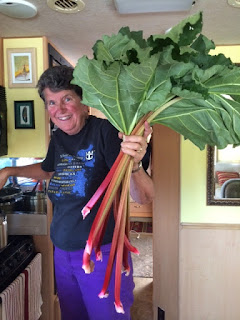








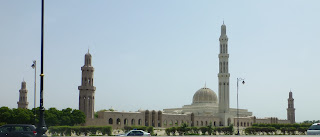










































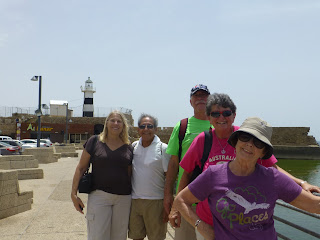











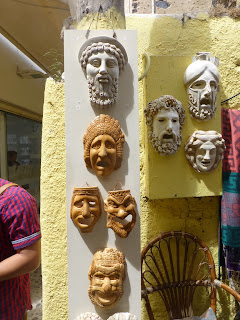

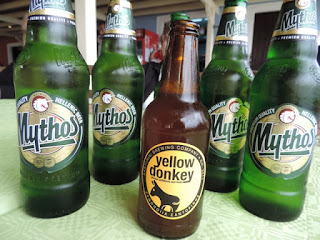






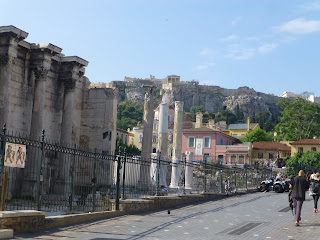



























2 comments:
Another fantastic post, Mary. Thanks so much . . . I know how long these postings take especially with all the great pictures you include, and I truly appreciate your effort!
Hi from Down Under, we are loving reading the blogs & the photos of your latest travels. Barry & Pam
Post a Comment